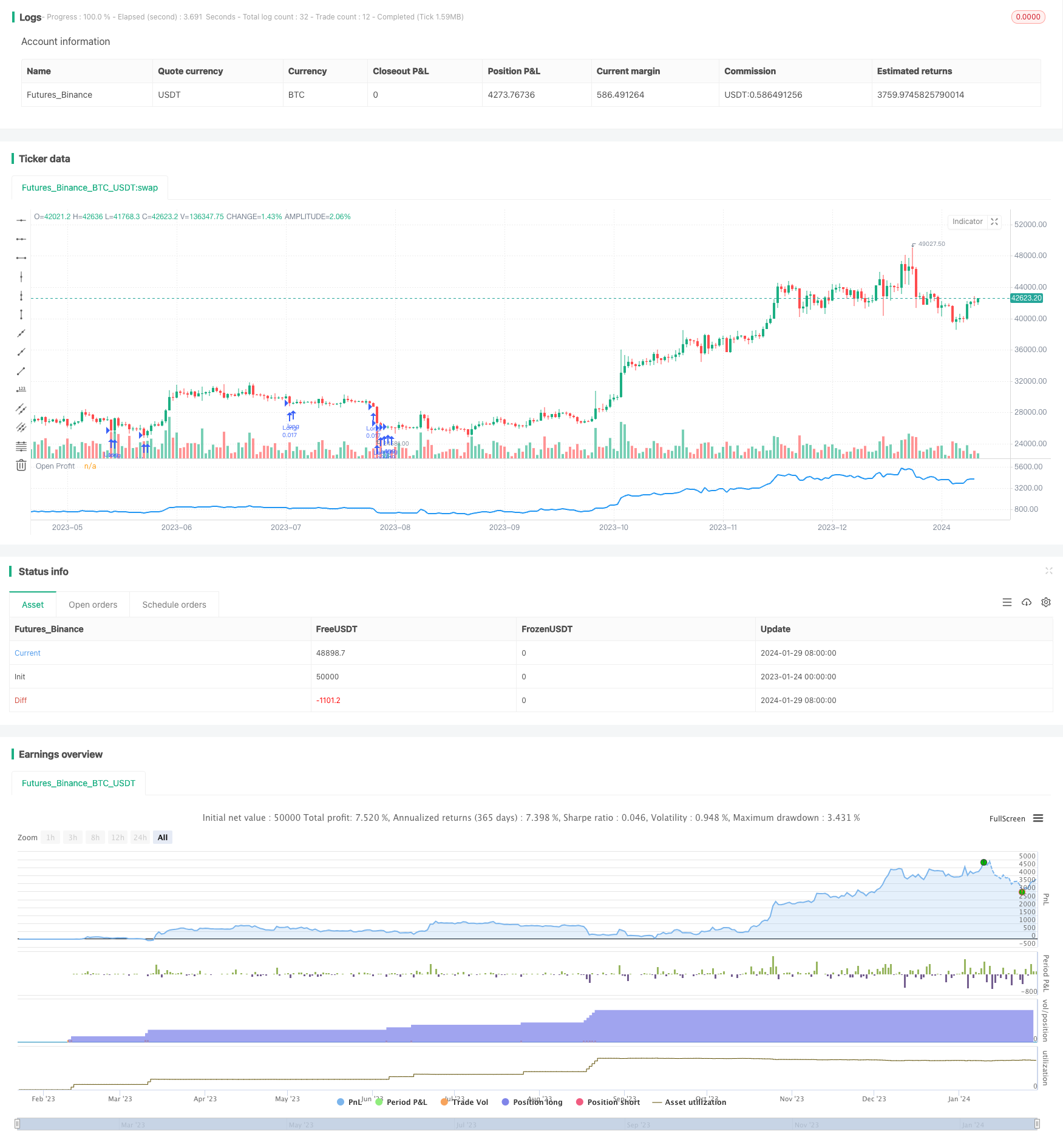
概述
动量布林带双均线DCA策略是一种低风险、长线持有的定投策略。它利用布林带指标判断价格是否跌破下轨,并结合RSI指标判断是否处于超卖区,以及双均线判断市场走势,在跌破布林带下轨且RSI低于50时定投买入,采用特定的资金规模,比如500美元。
策略原理
该策略主要基于布林带指标和RSI指标,辅以双均线判断市场走势。布林带是根据正常分布统计理论计算股票价格相关性和波动率,构建出股票价格的区间范围。当价格跌破下轨时表示股票进入相对低价区域。RSI指标判断价格是否处于超卖区。双均线判断市场短期和中期走势。
该策略的交易逻辑是:当股票价格跌破布林带下轨,且RSI低于50时进行定投买入,表明股票处于相对低位且有一定反弹动能。双均线判断市场走势,可避免在市场持续下跌时仍然定投买入。
优势分析
该策略最大的优势是风险较低且容易操作。采用定投策略,不需要关注具体的买入时机,只要符合条件就买入,降低了交易频率。布林带指标判断价格跌破下轨代表进入低价区,买入后的上涨空间较大。RSI低于50判断已经进入超卖区域,有望出现反弹。资金固定定投也控制了单次亏损的范围。
风险分析
该策略的主要风险在于:1)无法确定市场底部,在股票市场大幅下跌时仍有亏损风险;2)RSI指标并不总是能判断超卖区的结束,价格可能继续下跌。3)定投策略需要定期投入资金,如果不能持续投入也会影响绩效。4)交易成本会对频繁小额交易产生一定影响。
为了控制风险,选择指数ETF等相对低风险资产进行操作。避免在整体大盘处于下跌通道时过于频繁买入。也可以考虑调整RSI参数以尽量筛选超卖区结束的时机点。
优化方向
该策略可以从以下几个方面进行优化:
采用更多指标判断买入时机。例如增加MACD、KD指标等判断是否处于超卖区域。
增加止损策略。当价格继续下跌一定幅度时止损离场,避免过度亏损。
调整布林带参数。当市场波动加大时,可以适当扩大布林带通道,避免过于频繁买入。
结合交易量指标。例如能量潮指标,避免在低量区域买入。
采用算法自动优化RSI参数。让RSI参数实时更新以尽量判断超卖区域结束点。
总结
动量布林带双均线DCA策略整合了布林带判断价格相对低位、RSI判断超卖区以及双均线判断市场走势,实现了低风险的定投买入策略。相比其他定投策略,该策略更加关注买入时机选择。虽然无法完全避免亏损,但损失幅度有限,且长线持有收益较为可观。通过一些参数调整和优化指标,可以进一步降低交易风险、提高策略效率。
/*backtest
start: 2023-01-24 00:00:00
end: 2024-01-30 00:00:00
period: 1d
basePeriod: 1h
exchanges: [{"eid":"Futures_Binance","currency":"BTC_USDT"}]
*/
//@version=4
strategy("Bollinger DCA v1", overlay=false)
//user inputs
contribution = input(title="Contribution (USD)",type=input.integer,minval=1,maxval=1000000,step=1,defval=500,confirm=false)
length = input(title="Bollinger (Period)", defval=20, step=1, minval=1)
mult = input(title="Deviations (Float)", defval=2.0, step=0.001, minval=0.001, maxval=50)
rsi_period = input(title="RSI (Period)", defval=14, step=1, minval=1)
//compute bollinger bands
source = close
basis = sma(source, length)
dev = mult * stdev(source, length)
upper = basis + dev
lower = basis - dev
//compute moving averages
ma50 = sma(close,50)
ma100 = sma(close,100)
ma150 = sma(close,150)
ma200 = sma(close,200)
//up_trend = ma50 > ma100 and ma100 > ma150 and ma150 > ma200
//dn_trend = ma50 < ma100 and ma100 < ma150 and ma150 < ma200
//compute rsi
strength = rsi(close, rsi_period)
//plot indicators
//p1 = plot(upper, color=color.gray)
//p2 = plot(lower, color=color.gray)
//fill(p1, p2)
//p3 = plot(ma50, color=color.red)
//p4 = plot(ma100, color=color.blue)
//p5 = plot(ma150, color=color.green)
//p6 = plot(ma200, color=color.orange)
//units to buy
units = contribution / close
//long signal
if (close < lower and strength < 50)
strategy.order("Long", strategy.long, units)
//close long signal
//if (close > upper and strength > 50 and strategy.position_size > 0)
//strategy.order("Close Long", strategy.short, units)
//plot strategy equity
plot(strategy.openprofit, color=color.blue, linewidth=2, title="Open Profit")